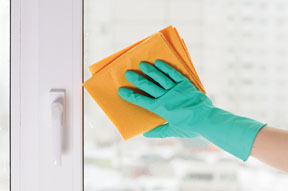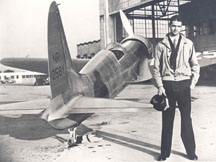Nature’s Way…A Better Way to Clean
By Hana Haatainen Caye
You’ve put out the recycling, composted your coffee grounds and replaced your old light bulbs with energy efficient ones. You deserve a big ol’ environmental A+! But wait, what is in that spray bottle you’re using? If it’s a cleaning product containing chlorine, phosphates and other chemicals that are harmful to the environment (and your family’s health), your grade just dropped a smidge.
No worries! Bring up your environmental grade curve by cleaning your home nature’s way. Did you know you can eliminate mildew on your walls with undiluted vinegar? Or restore wood by wiping it down with a soft cloth and a mixture of ¼ cup olive oil, ½ cup vinegar and two cups water? You can also make your windows shine with a 50/50 mixture of vinegar and water wiped down with soft microfiber cloths or newspaper. The key ingredients for a naturally spotless home are baking soda, lemons and/or lemon juice, white distilled vinegar, rubbing alcohol and organic dish soap. When used with microfiber or chamois cleaning cloths, a scrubbing sponge, bucket and a cleaned-out recycled spray bottle, you can clean the eco-friendly way, saving a ton of money to boot.
The Heart of the Home
Let’s start in the kitchen, where bacteria love to hide! Keep your dishrags and sponges bacteria-free by soaking them for approximately 8 hours in hot water and ¼ cup vinegar.
Sink – Scour your sink with ¼ cup baking soda, one tablespoon liquid dishwashing detergent, and just enough vinegar to create a thick, creamy texture. Shine up your chrome fixtures by scrubbing them with four parts vinegar to one part salt. Or make your sinks and fixtures sparkle with a halved lemon sprinkled with baking soda on the cut side.
Garbage Disposal – After you’re done scrubbing with the lemon, cut it into smaller pieces and dump it down the disposal. The fresh citrus will have your kitchen smelling clean in no time. You can also make ice cubes out of undiluted vinegar and grind a few cubes in the disposal to kill bacteria; flush with cold running water.
Refrigerator – The walls and shelves of your refrigerator can be safely cleaned with a 50/50 solution of water and vinegar. If the top of your refrigerator has fallen victim to the telltale grime of the kitchen, eliminate it with full strength vinegar.
Microwave – In order to have a sparkling microwave, simply put a glass microwavable bowl inside with a mixture of ½ cup white distilled vinegar and ½ cup water. Heat on high for 90 seconds and wipe clean.
Dishwasher – On a monthly basis, it’s a good idea to run your empty dishwasher through a full cycle with just a cup of vinegar. Skip the rinse agent you usually use; vinegar is a much greener and cheaper solution. Just pour it in the dispenser and let it do its magic.
Homemade dishwashing detergent is another environmentally and economically friendly alternative to commercial brands. Simply add one tablespoon each of 20 Mule Team® Borax and Arm & Hammer® Super Washing Soda to your dishwasher soap dispenser. This averages to about four cents per load.
Countertops – The lemon’s natural antibacterial and antiseptic properties make them perfect for cleaning tile or laminate countertops. Simply spray lemon juice on your counter, let stand for a few minutes, then scrub with a sprinkling of baking soda. Rinse with additional lemon juice.
Granite countertops require a gentler alternative. In a spray bottle, mix one part rubbing alcohol with three parts water and a few drops of dish soap. Apply to granite and polish with a microfiber cloth for ultimate shine. For stubborn stains, mix baking soda with water or rubbing alcohol (for oil based stains) or peroxide (for water based stains) until the consistency of peanut butter. Dampen the stained granite and spread with the soda mixture. Leave until the mixture dries–usually a day or two–and polish with a microfiber towel and rubbing alcohol/water/dish soap solution.
Floor – Grab your spray bottle and add three drops dishwashing soap to 1/3 part rubbing alcohol, 1/3 part water and 1/3 part white distilled vinegar. Spray and mop. If you have tough stains, apply the vinegar full strength, add some baking soda and scrub. Stains can form on travertine flooring if lemon or vinegar is used to clean it, so substitute additional rubbing alcohol and water for the vinegar in the above cleaning solution. Check with the manufacturer’s recommendations for cleaning this and any other type of stone flooring.
The Bathroom
Another germ and bacteria-laden room in your home is the bathroom. Soak your loofah and sponges the same way as your kitchen sponges to keep them fresh.
Bathtub – Stubborn film in the bathtub can be easily eliminated by wiping down your tub with vinegar and then scouring with baking soda. Spray full strength vinegar on shower doors before turning on the shower to avoid hard water deposits.
Showerhead – Fill a plastic bag (an old bread bag works well) with ½ cup baking soda and 1 cup vinegar and fasten it around the showerhead, submerging the head in the solution. Once the bubbling stops (in about an hour) remove the bag and turn on the water. No more scum!
Toilet – Before you head to bed, pour one cup of vinegar into the toilet bowl. Scrub it in the morning and your toilet will be sparkling.
This is just a small sampling of how you can make your home a greener and cleaner environment for your family. Being green never looked and smelled so good!
Culture Through Collections
By Lisha Ross
Life is culture. Living is learning. You can learn about it while surfing the History or Discovery channels. You can sift through various websites and take your best guess as to whether the information is accurate or not. Or, you can make a short journey to that fabled place with all those FREE books. That place you spent hours toiling in the reference section in college. It’s your public library. And guess what! You don’t have to be writing a research paper or thesis to discover what historical gems and modern marvels are stowed away in the Special Collections department. Heck! You don’t need a reason at all, save for expanding your mind a bit, or maybe just spending a quiet, educational afternoon with the kids or all by yourself.
Especially Special
What’s so special about special collections? A special collection is full of rare and unique items that differentiate one library from another, often things you cannot find anywhere else in the world; books, posters, digital files, photographs, original documents and the like representing a specific theme. You’d be surprised how much work goes into the development and maintenance of such a collection. Committees are formed, experts consulted, media gathered and sorted. Once you experience it for yourself, you might understand. But the real joy is when you find a special collection that just speaks to you, and with so many libraries about town, each with their own unique collection, there is definitely something out there for everyone.
UNLV
Home of the mighty Rebels, our fair city’s university has one of the more grand collections in town, all dedicated to the history, culture and physical environment of Las Vegas and the exploration of the West. Like a museum gallery unto itself (except that you can actually touch the goods) the reading room of the special collections department on the third floor of the Lied Library is the only portion of the collection where you can view materials without requesting them. It houses the Taxe Collection on gaming, atlases and maps circa 16th century, Clark County Land Office Survey maps, a journal of George Wheeler’s expedition of the West, Ansel Adams’ Sierra Nevada picture book and a broad scope of related artifacts. A great feature here is a rather large assortment of 16-18th century books on gaming, including many by Edmond Hoyle, the well-known gamblin’ man who set the standard for modern gaming. If you’re at all interested in statistics, whether for practical purposes or intellectual stimulation, this will certainly tickle your fancy.
Everything else in the collection is closed stack, which means you must peruse the university website for items of interest and request them specifically. It’s well worth the effort, as this is where you’ll find some of the most exclusive materials. “Showgirls” contains drawings of garish costume plumage and, dare I mention, the topless female form; a reflection of the kind of vivid adult entertainment that put Vegas on the map, with notes of vaudeville, burlesque and Broadway. “Dino at the Sands” tells of Dean Martin and the Rat Pack through photographs and documents; “Welcome Home, Howard” explores the infamous aviator Howard Hughes; and “Las Vegas and Water in the West” covers the struggle between water supply and growth. At this point, you’ve barely breached the surface. There are still oral histories, modern how-to gambling guides, music and myriad other fascinations to uncover. Prepare yourself in advance by visiting http://library.nevada.edu/speccol/index.html.
Las Vegas
At the West Las Vegas Library, you’ll find the African American collection, focusing on the African American experience in Las Vegas, Nevada and the West. Built to promote a sense of community and to empower readers, especially African Americans, the collection is comprised of the Frederick Douglas collection, highlighting the works of the esteemed abolitionist; the National Collection and the Nevada Collection, both brimming with books and materials by and about African Americans in the western states of the U.S. and in Las Vegas, past and present. These stories are told through books, photographs, newspaper clippings, articles and memorabilia that have been graciously donated by members of the West Las Vegas Community. Check out more special collections in the Clark County Library District at www.lvccld.org, including the Asian Culture Collection at Spring Valley Library and the International Language Collection at Sahara West Library, among others.
Henderson
Looking for your roots? Start digging at the Clark County Genealogy Society Collection at the Paseo Verde Library (280 S. Green Valley Pkwy.). In a quiet room, you can research your lineage and find records from the Henderson area and around the globe. In addition to branching off the family tree, every Henderson library has a Nevada Collection, which contains not only historical and cultural photographs, objects and data, but also modern information on hiking trails and wildlife as well as books by Nevada residents. With Henderson Library’s virtual library (www.mypubliclibrary.com), you can also browse digital collections of photographs, newsletters and newspaper clippings, scrapbooks and memorabilia spanning about 7 decades of life in Henderson from World War II and onward.
There’s a wealth of knowledge tucked between the worn pages of those closed stacks and collections. See for yourself!








